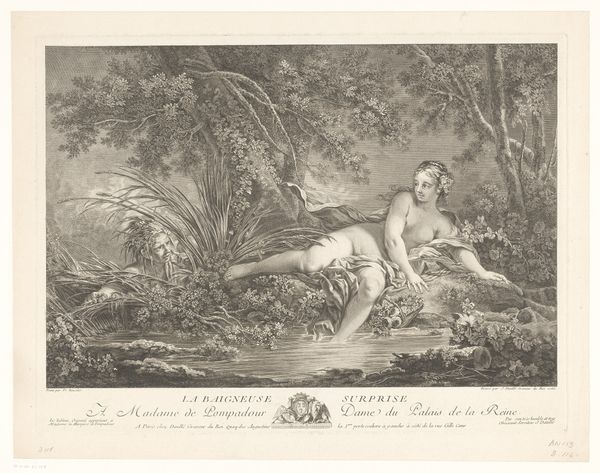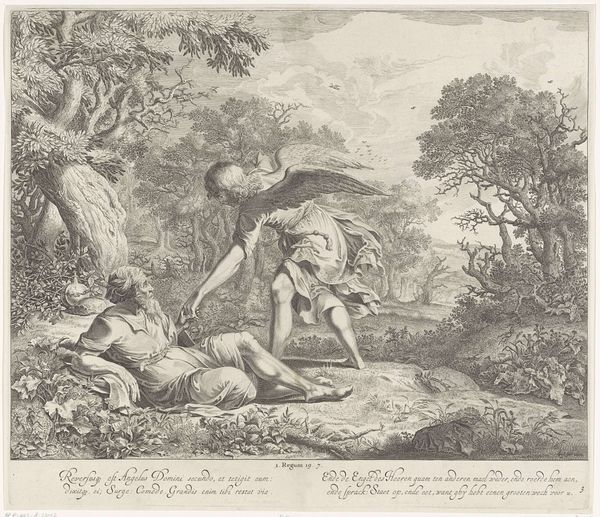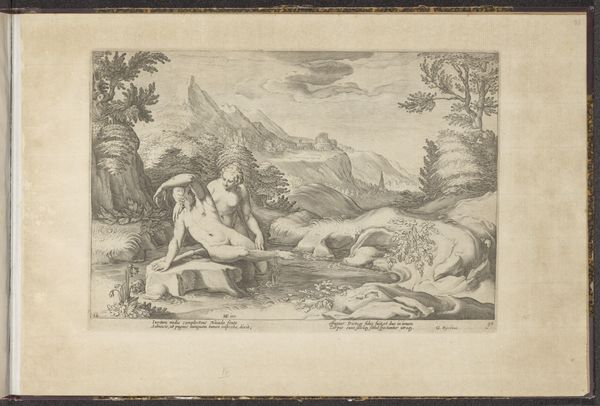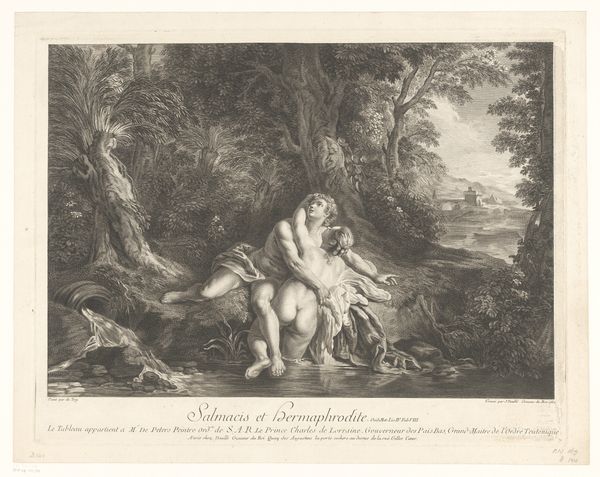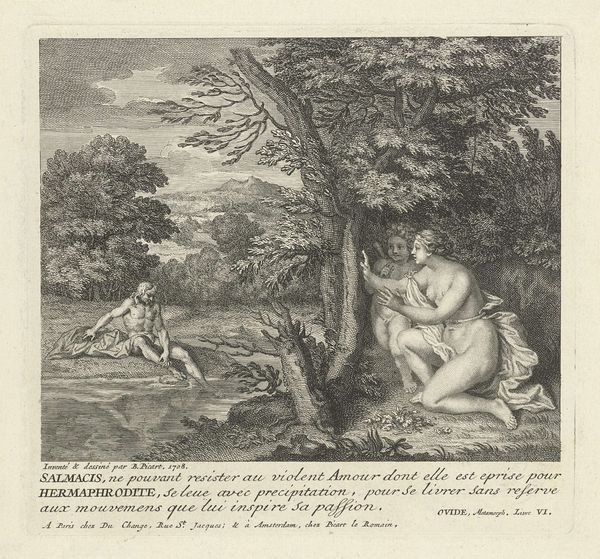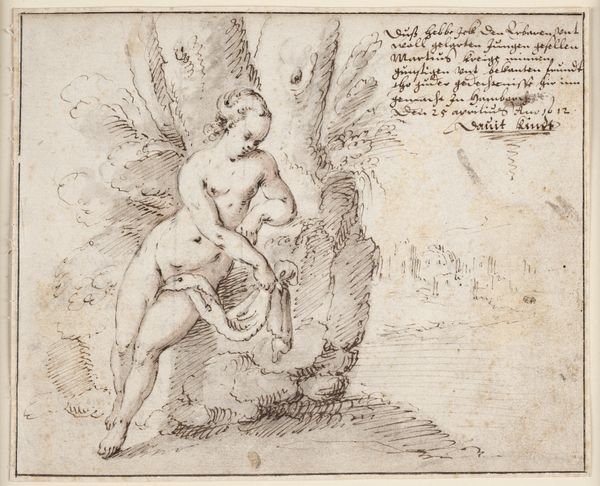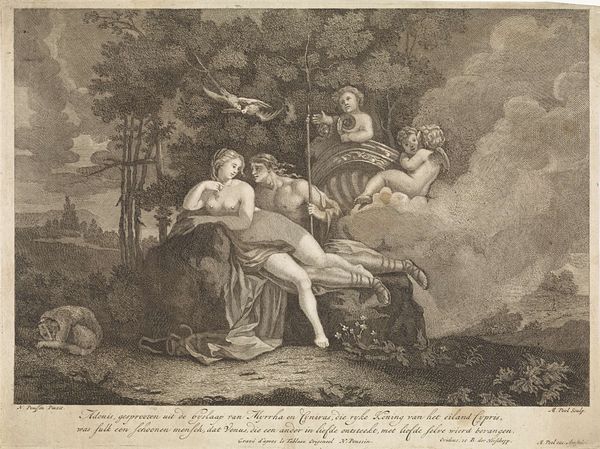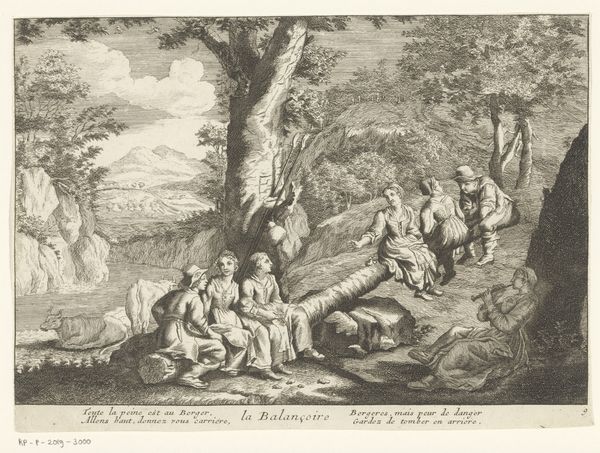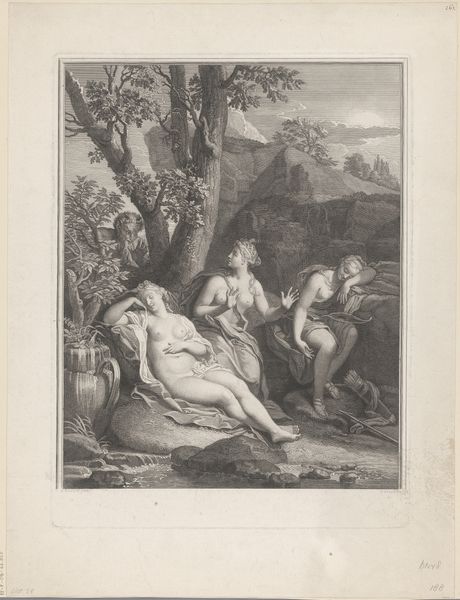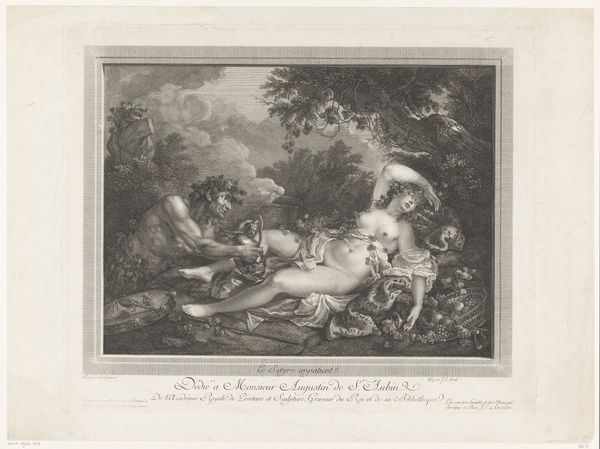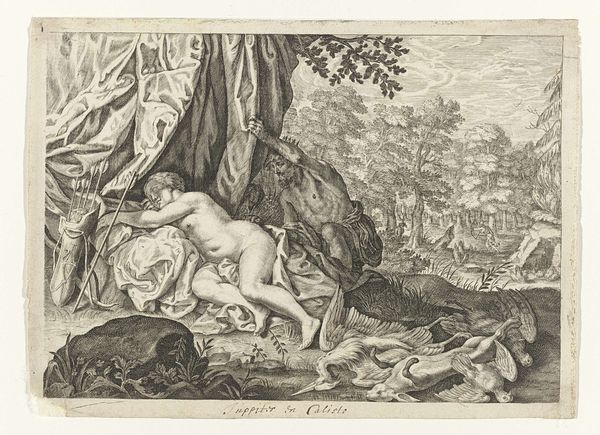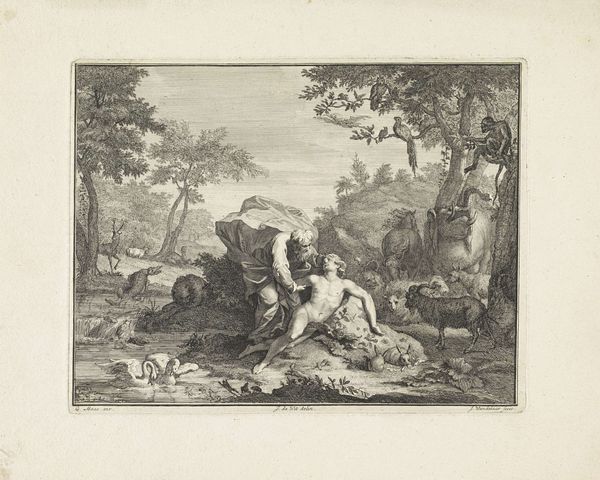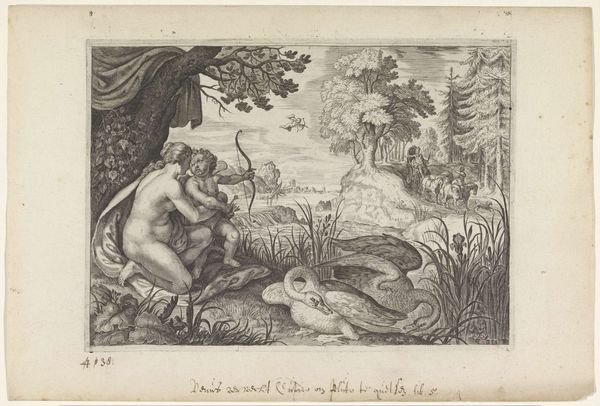
Dimensions: 9 3/4 x 13 1/8 in. (24.77 x 33.34 cm) (image)11 15/16 x 17 1/4 in. (30.32 x 43.82 cm) (sheet)18 1/16 x 22 1/16 in. (45.88 x 56.04 cm) (mat)
Copyright: Public Domain
Editor: This is "The Death of Abel," a 1766 etching by Richard Earlom, based on a painting by Andrea Sacchi. It's quite stark, and the way Abel is laid out seems so… deliberate. What do you make of this print? Curator: It’s fascinating to consider this print through a materialist lens. Consider the economic realities embedded in its creation. Etching allowed for wider distribution than a unique painting, democratizing access to imagery. The lines etched into the metal plate – those very marks – speak to a laborious process. Think of the artisan, Earlom, translating Sacchi’s original. Editor: So, the labor involved changes how we see the image itself? Curator: Precisely. How does the mechanical reproduction, the print medium itself, alter the message compared to Sacchi's original painting? It removes the hand of the 'master' painter. We see here the beginnings of mass production influencing art’s consumption. The lines, created through acid and metal, allowed the story to be spread beyond a wealthy patron's walls. Consider also how the material used -- the ink, paper, and metal -- would have been sourced and traded, connecting the art to broader economic networks. Does seeing the labor that went into creating it, compared to just looking at the finished product, alter your understanding of the image’s value? Editor: Definitely! I hadn't thought about it that way. The print isn't just about the biblical story, it is a record of early mass media and manufacturing processes. Curator: It's a commodity, embedded within a system of production, exchange, and consumption. So how does thinking about that change how you experience "The Death of Abel"? Editor: I see that the story is embedded in labor, production and social layers that were not initially apparent, as well as distribution of this idea. Curator: Exactly! Art is inseparable from the conditions of its making and dissemination.
Comments
No comments
Be the first to comment and join the conversation on the ultimate creative platform.
